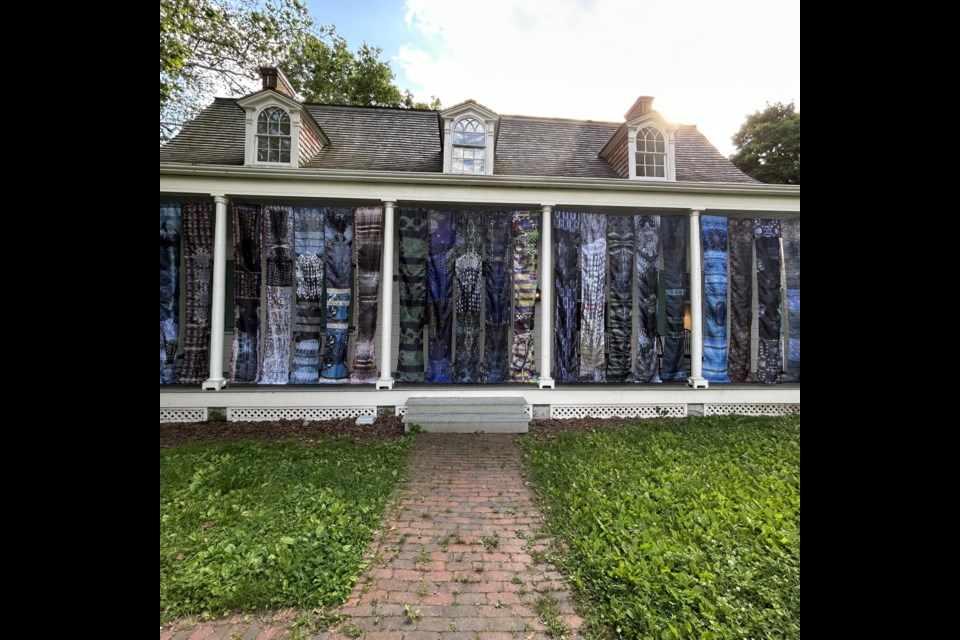As legacy cultural institutions start to reckon with history it has often ignored, the Lefferts Historic House, a Brooklyn institution that has roots in America harking back to the colonial era, that reckoning includes addressing slavery and land appropriation.
Visual artist Adama Delphine Fawundu, the first ReImagine Lefferts Artist in Residence, previewed her exhibition Ancestral Whispers on Thursday, which tackles the legacy of African enslavement at the Lefferts House and the Lenapehoking tribe’s ancestral footprint on the land.
Fawundu embraces the celebration and humanization of the voiceless impacted by the legacy of Lefferts House through a new site-specific work, which was based on research done by the Prospect Park Alliance into the lives of Africans enslaved by the Lefferts family.
The artist created 25 fabric banners that transform the house’s Flatbush Avenue facade. The banners are inspired by, and honor the humanity of the 25 Africans enslaved by the Lefferts family at the house.
“It was a long process making the exhibition, because it is a digital composite from many tactile materials, from documents referencing the people who were enslaved in Lefferts House and also my grandmother's textiles, who’ve I’ve had with me for just about 50 years," Fawundu said.
The Lefferts Historic House is an 18th-century farmhouse that features a working garden, historic artifacts, and indoor and outdoor exhibits. It was once a working farmhouse and ongoing research suggests that at least 25 people were enslaved there between 1783, when the house was completed, until 1827 when New York State abolished slavery, according to the Alliance.
“We had an early series of community conversations where the overwhelming conversation was who were (the 25 slaves,) what were their names, when did they live and die and what did they do," said Dylan Yeats, project manager for ReImagine Lefferts Initiative, who spearheaded the research.
Prospect Park Alliance President Morgan Monaco told BK Reader, “There’s such an incredible power that art has, to tell a story and to connect with history to the present,” and spoke of the excitement to celebrate the first artist in residence program.
In addition to creating the textile banners outside, Fawundu also curated the spaces inside the house, which includes her 2020 piece, In the Face of History Freedom Cape, and a selection of prints.
The exhibit opens to the public on June 9 at 2pm.



.png;w=120;h=80;mode=crop)
